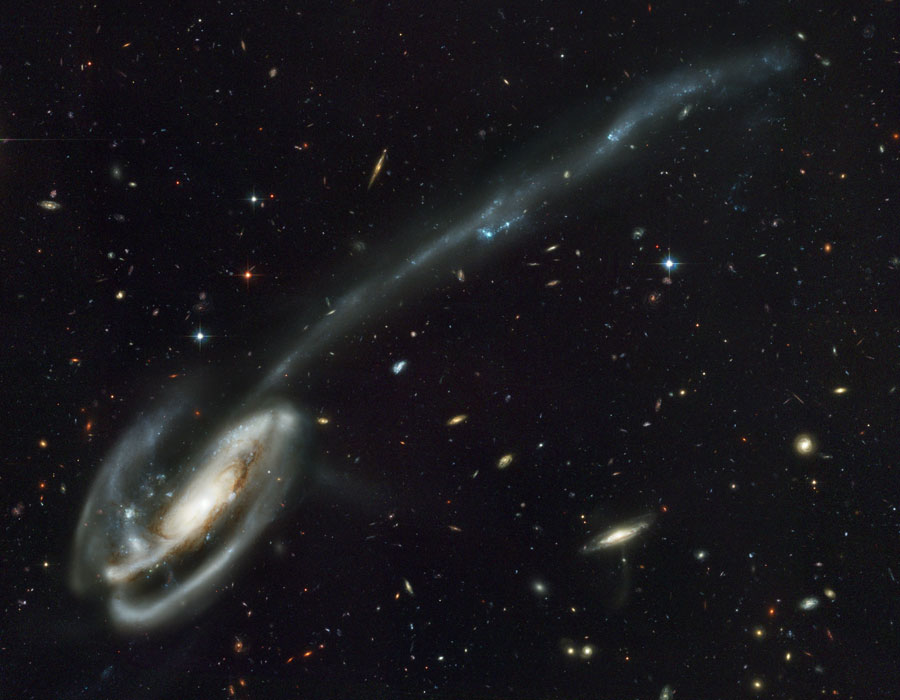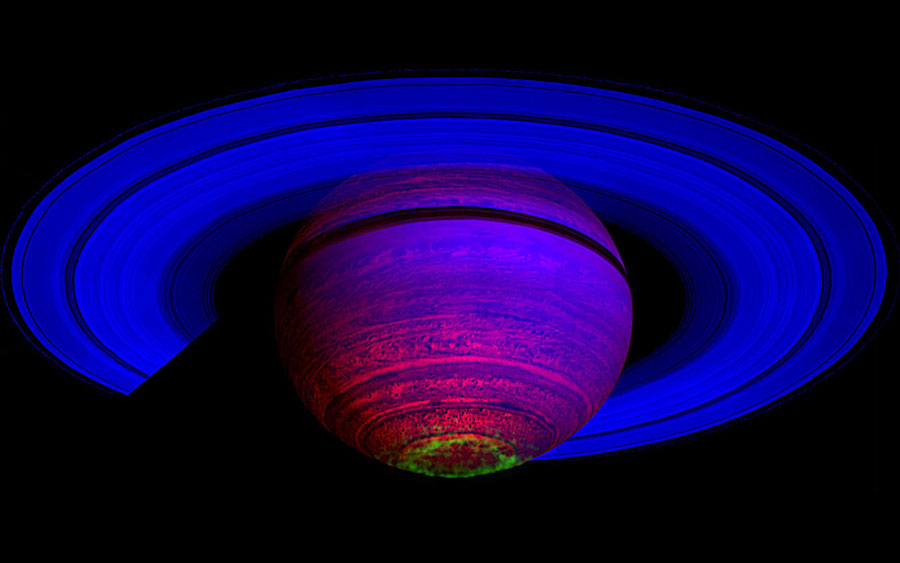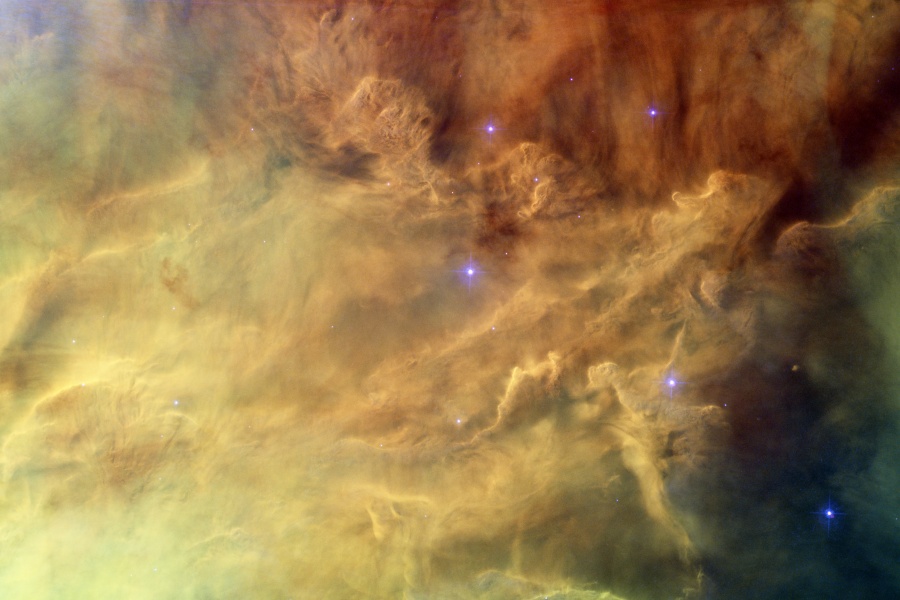papodidi
Geek
Einfach mal "himmlische" Bilder:

Arp 188 and the Tadpole's Tidal Tail
Credit: H. Ford (JHU), M. Clampin (STScI), G. Hartig (STScI), G. Illingworth (UCO/Lick), ACS Science Team, ESA, NASA

The Dancing Auroras of Saturn
Credit: VIMS Team, U. Arizona, U. Leicester, JPL, ASI, NASA

Hubble's Lagoon
Credit: NASA, ESA, Hubble Space Telescope

Arp 188 and the Tadpole's Tidal Tail
Credit: H. Ford (JHU), M. Clampin (STScI), G. Hartig (STScI), G. Illingworth (UCO/Lick), ACS Science Team, ESA, NASA
Explanation: Why does this galaxy have such a long tail? In this stunning vista recorded with the Hubble Space Telescope's Advanced Camera for Surveys, distant galaxies form a dramatic backdrop for disrupted spiral galaxy Arp 188, the Tadpole Galaxy. The cosmic tadpole is a mere 420 million light-years distant toward the northern constellation Draco. Its eye-catching tail is about 280 thousand light-years long and features massive, bright blue star clusters. One story goes that a more compact intruder galaxy crossed in front of Arp 188 - from left to right in this view - and was slung around behind the Tadpole by their gravitational attraction. During the close encounter, tidal forces drew out the spiral galaxy's stars, gas, and dust forming the spectacular tail. The intruder galaxy itself, estimated to lie about 300 thousand light-years behind the Tadpole, can be seen through foreground spiral arms at the lower left. Following its terrestrial namesake, the Tadpole Galaxy will likely lose its tail as it grows older, the tail's star clusters forming smaller satellites of the large spiral galaxy.

The Dancing Auroras of Saturn
Credit: VIMS Team, U. Arizona, U. Leicester, JPL, ASI, NASA
Explanation: What drives auroras on Saturn? To help find out, scientists have sorted through hundreds of infrared images of Saturn taken by the Cassini spacecraft for other purposes, trying to find enough aurora images to correlate changes and make movies. Once made, some movies clearly show that Saturnian auroras can change not only with the angle of the Sun, but also as the planet rotates. Furthermore, some auroral changes appear related to waves in Saturn's magnetosphere likely caused by Saturn's moons. Pictured above, a false-colored image taken in 2007 shows Saturn in three bands of infrared light. The rings reflect relatively blue sunlight, while the planet itself glows in comparatively low energy red. A band of southern aurora in visible in green. Inspection of many more Saturnian images may well lead to an even better understanding of both Saturn's and Earth's auroras.

Hubble's Lagoon
Credit: NASA, ESA, Hubble Space Telescope
Explanation: Like brush strokes on a canvas, ridges of color seem to flow across this scene. But here, the canvas is nearly 3 light-years wide and the colors map emission from ionized gas in the Lagoon Nebula, recorded by the Hubble Space Telescope's Advanced Camera for Surveys. Also known as M8, the nebula is a star forming region about 5,000 light-years distant in the constellation Sagittarius. Hubble's remarkably sharp, close-up view reveals undulating shapes sculpted by the energetic light and winds from the region's new born stars. Of course, the Lagoon nebula is a popular target for earthbound skygazers, too. It features a prominent dust lane and bright hourglass shape in small telescopes with wider fields of view.








